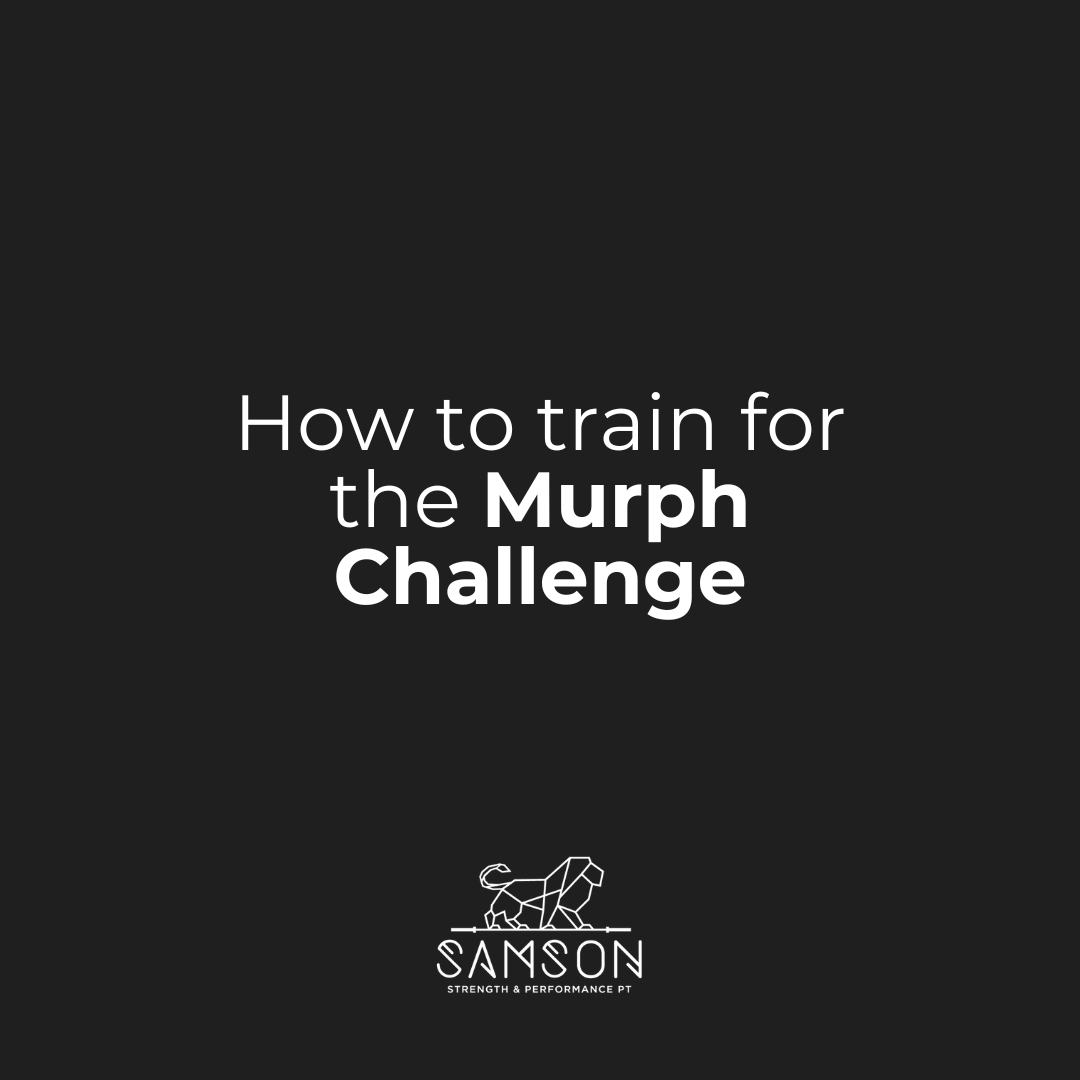How to Train for the Murph Challenge
The Murph Challenge, named after Navy SEAL Lieutenant Michael P. Murphy, has been a staple in the CrossFit community for years. Each year we see more and more gyms joining the challenge and coming together to remember and honor Lieutenant Michael P. Murphy, who was killed in Afghanistan June 28th, 2005.
This challenging workout is meant to be grueling and difficult. It is meant to remind us of the sacrifices service men and women make on a consistent basis for our freedoms. What it is NOT meant to do, is injure you and sideline you from your fitness. So, how do you train for the Murph challenge?
Murph consists of a one-mile run, 100 pull-ups, 200 push-ups, 300 air squats, followed by another one-mile run—all done consecutively and with a vest, if possible.
Whether you're preparing for the annual Memorial Day Murph Challenge or simply want to challenge yourself, here are some tips to help you train effectively and safely for the big day.
Understand the Challenge:
Before diving into training, it's crucial to fully understand the demands of the Murph Challenge. It's a high-intensity workout that requires both strength and endurance. Knowing what to expect will help you tailor your training program and set realistic goals. Don’t go into it thinking you can do it unpartitioned if you aren’t even training pull-ups at this point in your fitness. Understand that you can still honor Murph’s memory and break the workout up into sets and/or modify movement. It is still going to be hard.
Start with a Baseline Assessment:
Begin by assessing your current fitness level. This should involve timing yourself for a one-mile run, testing your pull-up, push-up, and squat capacity, and noting your overall endurance. This baseline will guide your training progression. This should give you a starting point for your practice and partitioning. Typically, you want to start with batches of work that are below your maximum threshold and build from there. For someone that is unable to run a full mile and has 5 kipping pull-ups as a max set, this may look like a 1:1 interval half mile run, then 5 rounds of 3 pull-ups, 6 push-ups and 9 air squats, followed by a 1:1 interval half mile run. Depending on how far out you start your training and what your baseline looks like, your starting volume could be 20-50% of the total workout.
Build Endurance Gradually:
Since the Murph Challenge involves running and bodyweight exercises, focus on building endurance gradually. Incorporate regular running sessions into your routine, starting with shorter distances and gradually increasing mileage. You can also vary your run:walk intervals to work your way up the endurance ladder. Additionally, build to high-repetition bodyweight exercises to improve muscular endurance. Try increasing volume while making movements easier i.e. banded pull-ups and elevated push-ups or decreasing volume while increasing difficulty i.e. strict pull-ups/barbell pull-ups, ring push-ups and weighted squats. If you already have a good baseline on pull-ups, push-ups, air squats and running, we put together a 6 Week Murph Prep Guide that will lead you through a gradual increase in reps with varying rep schemes.
Work on Pull-Ups, Push-Ups, and Squats:
This should be a no-brainer, but make sure you dedicate specific training sessions to pull-ups, push-ups, and squats. If you're not yet proficient in pull-ups, use assistance bands or opt for modified versions until you can perform them unassisted. Add in supplemental pulling and pushing to build strength and endurance of the muscles needed for pull-ups and push-ups. Modulate volume and difficulty to work on the same muscle groups differently.
Practice Partial Murph:
Periodically incorporate partial Murph simulations into your training schedule and play with the rep scheme. Many people do not complete unpartitioned 100-200-300. Use these practice runs to see what feels good for you and helps you to manage stress to your body to keep going. These practice sessions also allow you to fine-tune your pacing and develop mental resilience.
Different partitioning styles for the full workout are included below. Trial these partitioning styles with smaller sets and decide what works best for you.
CINDY STYLE:
20 ROUNDS:
5 Pull-ups
10 Push-ups
15 Air Squats
--
SAVE THE CHEST:
20 ROUNDS:
5 Pull-ups
5 Push-ups
15 Air Squats
5 Push-ups
--
SMALLER SETS:
33 ROUNDS:
3 Pull-ups
6 Push-ups
9 Air Squats
Then one set of:
1 Pull-up
2 Push-ups
3 Air Squats
Emphasize Recovery and Injury Prevention:
Given the intensity of Murph training, prioritize recovery and injury prevention. Incorporate rest days into your schedule to allow your muscles to recover and repair. Additionally, include mobility work for forearms and lats and make sure you add in accessories to keep the elbows and knees happy and healthy.
Nutrition and Hydration:
Proper nutrition and hydration are essential components of Murph training, especially the day of. Fuel your body with meals that provide adequate energy (carbs) for workouts and support recovery. Stay hydrated throughout the day, especially before and after these practice sessions and the day of the workout, to maintain optimal performance.
Monitor Progress and Adjust as Needed:
Regularly assess your progress by retesting your baseline measurements. Adjust your training plan based on feedback from these assessments and don’t jump in over your head to prevent overtraining and injury. Consistency and progressive loading are the keys to success.
Training for the Murph Challenge requires consistency, discipline, and a structured approach. By understanding the challenge, gradually building endurance and strength, and prioritizing recovery, you can prepare yourself to tackle this demanding workout with confidence. Remember, the journey is as important as the destination, so enjoy the process and celebrate every milestone along the way. Don’t be afraid to scale the workout if you are not ready yet. Remember, this workout is NOT a way to show out. Your RX is NOT important. Your time is not important. What IS important is that you show up, suffer a little, and support your community and those around you.
Looking for help with programming for improving your performance?
At Samson Strength and Performance PT, we can help you not only improve your performance for CrossFit and Weightlifting, but also help you stay injury free. Request a free call by clicking the link below. We’d love to help you.

